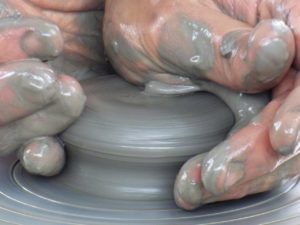When I was in school, I loved the precision and tidiness of it—each class a container with a tidy list of assignments by week. All these fascinating subjects, like chests full of jewels, and if we only sign up and listen, we might uncover some of those jewels. Looking at new syllabi at the beginning of a semester, going out and purchasing new books at the bookstore. The whole process was exciting and full of fresh adrenaline—like gifts would lie behind that door, for sure. But often, the sense of excitement turned into a bit of drudgery, as we slogged through the material and assignments…until finally at the end of a term, I just wanted the whole thing to be over.
After I finished my Ph.D. at the University of Chicago, I was so burnt out on reading that the sight of a book or words on a page made me physically sick to my stomach. Even the words on the back of a cereal box swam in front of my face and made me nauseas. So that summer I gathered together stacks of dissertation notes and literature, and dumped them all into the massive recycling container at the corner of Ashby and MLK in Berkeley.
I stood on top of the ladder and watched as seven years of academic research dropped away in front of me, never to be seen again. Throwing away all scraps of information related to a PhD dissertation that I spent years working on gave me nightmares. “Surely I must have just thrown away something that I would need someday?”
 The only thing, the only direction, that felt right was the creative arts. I took pottery and creative writing classes, bought paints and started painting. The creative arts made me feel spacious and free—they gave me life.
The only thing, the only direction, that felt right was the creative arts. I took pottery and creative writing classes, bought paints and started painting. The creative arts made me feel spacious and free—they gave me life.
So when I started teaching, I found myself split—on one hand was art, image, beauty and creative process that I loved so much; and on the other hand, teaching and learning which I also loved. They seemed hopelessly separated. Over the years, as I’ve continued to pursue the question of human learning, those two hands have come together.
Decades of research has clearly demonstrated that creative process and metaphoric images are our native language. “Men sang before they spoke…they learned the language of water, fire and clouds before they produced more formal and sophisticated language systems,” writes Harry S. Broudy in Reflections from the Heart of Educational Inquiry.
At a deep level, we learn through metaphoric image.
When I discarded my books and academic papers, what I really wanted was to learn at this deeper level.
Might you be ready to tap into your own depths? Join me for a Doorway session.